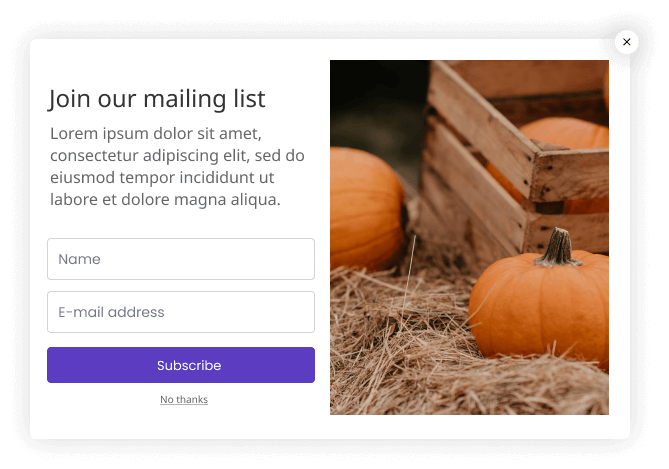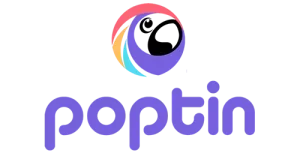We've collected hard technical data on the top popup / gamification / CRO tools to see which will win in the speed showdown and which will sink your SEO and conversion rates.
Guides to online success often cover topics like pay-per-click marketing, building social followings and design. Yet, site performance – an often critical factor – is overlooked or dismissed as ‘too hard’ or ‘out of our control’.
Site speed is core to e-commerce success. It directly influences conversion rates, customer repeat rates and search engine rankings.
Google has officially announced that site speed is a ranking factor. It can no longer be ignored!
Most modern platforms like Shopify or Wix are fast by default. But why do they slow down over time? Apps and 3rd party scripts pull the site speed down like anchors!
3rd party apps and scripts are mostly unavoidable – which means your competitors are using them as well. By selecting which you use carefully you can gain a huge competitive edge.
A one-second site speed improvement can increase mobile conversions by up to 27%.
Source: Google
Testing method
Our goal was to mimic an average user’s experience with each platform. So, most settings were left as default and a visually similar popup was created on each platform.
A simple mail form on half of the popup and a photo of pumpkins from Unsplash user Anastasiia Chepinska was used. Thanks, Anastasiia!
Each popup was set to trigger 5 seconds after the page loaded.
Baseline measurements were taken from the test site and then each plugin was installed in turn. After each install the site was re-tested to calculate the total impact and resource loading.

Test competitors 🥊
We picked some of the most popular apps on the internet to face off against each other in a performance showdown.



Starting from the least technical metric and slowly diving deeper, let’s look at how each app performed.
Lighthouse speed score
Lighthouse by Google is the most common speed-checking and recommendation tool. Although it is the most common speed testing tool, please be aware that its results don’t tell the full story.
Google measures real-world user experience on-site and uses this for rankings. The Lighthouse speed score simply provides guidelines as a starting point.
Lighthouse speed score measured after popup enabled. Average of 5 runs.
*Higher is better
All plugins that loaded modern JavaScript asynchronously didn’t struggle too much here. Powr loading a lot of resources pulled the speed score down and Poptin’s loading of JQuery and general bloat severely impacted the speed score.
Total data transferred
Going a little deeper a great metric to look at for gauging speed is total data transferred. How much does the user need to download for a popup to show?
This has a significant impact on mobile devices and people on crowded networks such as city centres.
We found some tools more than doubled the total size of the page(!)
Overall data transferred with Popup activated (Kilobytes)
*Lower is better
Image compression and data transfer
Google’s Lighthouse tool raises a key factor: the use of modern image formats and correctly sized images.
We’ve taken the average user approach of grabbing an image directly from Unsplash and uploading it to the popup builder to see how each handles the resizing and compression.
Overall image data transferred (Kilobytes)
*Lower is better
Supported image compression formats
The issue of modern image formats is demonstrated by Google’s Lighthouse. We checked the delivery format of each popup builder in Google Chrome to see what format would be delivered.
Promolayer: AVIF & WebP supported
Uses the most modern AVIF format for supported browsers, falls back to WEBP and JPG for older browsers.
Privy: No modern formats
Only supports JPG / PNG. Fails Lighthouse modern formats check.
Optimonk: WebP supported
Uses the modern WEBP format for supported browsers, falls back to WEBP and JPG for older browsers.
Powr: No modern formats
Only supports JPG / PNG. Fails lighthouse modern formats check.
Poptin: WebP supported
Uses the modern WEBP format for supported browsers, falls back to WEBP and JPG for older browsers.
Total JavaScript resources
Going deeper again, let’s look specifically at JavaScript. Kilobyte for kilobyte JavaScript is the most resource-intensive part of any website.
Why? I hear you ask. An image, while large, just needs to be downloaded and displayed. JavaScript on the other hand needs to be downloaded, parsed and then executed (run) in the browser.
This uses up the CPU and prevents the device from doing other things (like letting the user complete their conversion smoothly!). This problem is multiplied on low-power devices like older phones which have weak CPUs.
Uncompressed Javascript resources (MB)
*Lower is better
Scripting execution time
At this level, we’ve profiled the execution and opening of a popup to see exactly how much CPU time is required to display a popup. This was profiled during the opening phase and does not account for potentially huge initial execution phases by tools with large Javascript bundles.
This test was performed on a modern M1 MacBook. Expect these execution times to be an order of magnitude higher on older mobile devices.
Scripting time required to display a popup. Shown in milliseconds.
*Lower is better
Conclusion
If you care about SEO and conversion rates, Promolayer is the ONLY popup / gamification / CRO tool you should be using.
Our team of engineers here at Promolayer are obsessed with conversion rates and performance. We’re amazingly proud of what they have achieved with this most recent release and are looking forward to boosting your conversion rate as well.
We will update this article as our tool and our competitors evolve. If you have any requests for metrics to be added to the article please don’t hesitate to send us a message.
